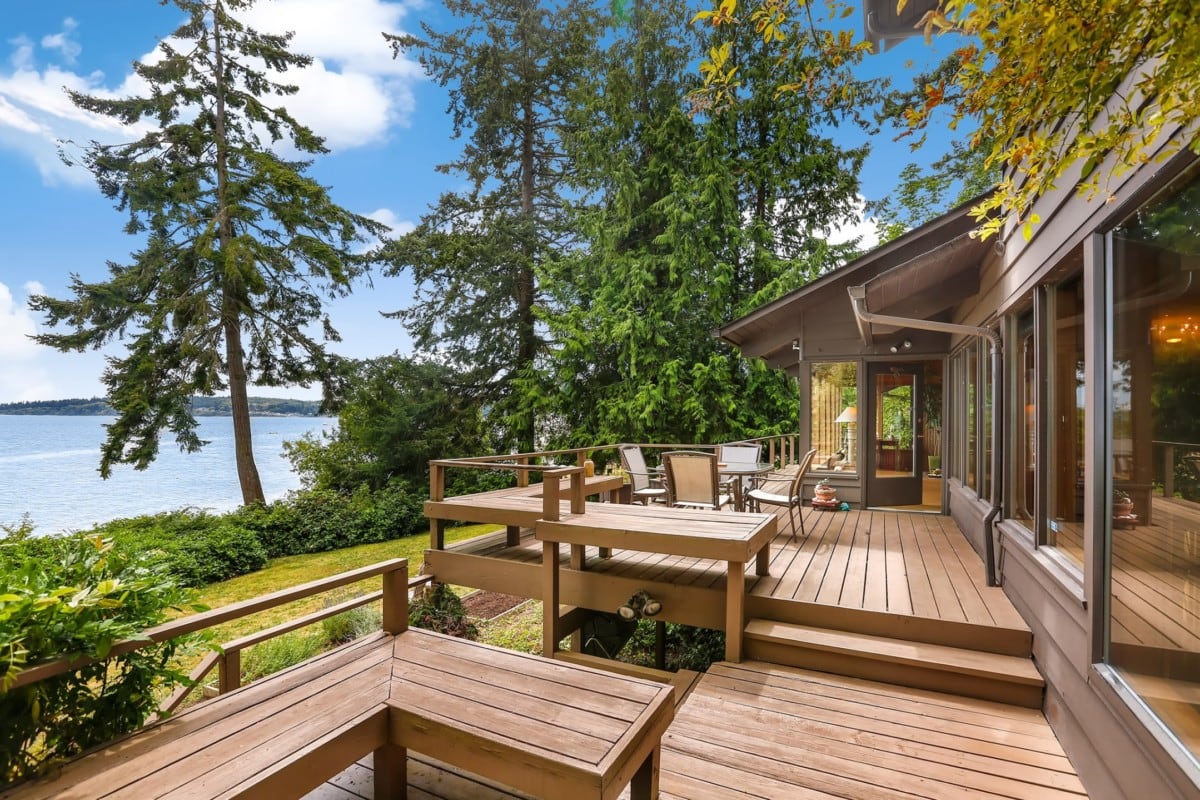If you are looking to attempt a DIY project for your home it is important to make sure you don’t get in over your head. Some DIY projects are more simple than others and may not need professional help, but others may be more complicated than you anticipated. Looking to update your bathroom or kitchen, or maybe knock walls down to create more space but don’t know where to start? We asked experts from Manhattan, NY to San Diego, CA to share the most common DIY fail homeowners make when attempting home projects, and how to avoid them.

Not allowing enough backswing for the fridge
One of the most common DIY fails homeowners and designers alike have made is where the fridge will be located in the new kitchen design. New generation fridges need room for the door to swing far enough open to allow the crisper to pull out for cleaning. To take care of this and give the backswing that’s needed, consider installing a 3″ or larger filler from the crown to the floor. – Express Cabinets
Failing to record the measurements correctly
Good measurements can be tricky to get, but they are the groundwork of DIY projects. A trick to getting the right measurement is to measure from the manufacturer’s perspective. For instance, if the deck is furnished with custom doors or screens, you might take measurements of the inside view, whereas the manufacturer might read the measurements from the outside looking in. Always check with the manufacturer to make sure measurements are recorded accurately. – Fresh Air Screens
Attempting a DIY project on plumbing or HVAC
One of the most dangerous areas to attempt a DIY project is plumbing and HVAC. Not only do those fittings require meticulous experience and precise measurements. If something goes wrong, it can flood and wreck your remodel later on. It also paves the way to slipping and other dangerous hazards. Avoid this by hiring a certified and licensed home remodeler who has the required inspections and training up to your state codes. – Craft Kitchen and Bath
Failing to double-check with an inspector
Contact your local building inspector. This is an important step in making sure that the remodeling work you do meets code. If your diligent DIY work doesn’t meet building regulations, you will have decreased the value of your home rather than increasing it. Building inspectors are happy to offer advice and tips to help make your project go smoothly. – Dean Cabinetry
Buying cheap materials for your decking
Build your deck for life long use to avoid a DIY fail. Don’t go cheap on materials that will give you headaches in the future. Invest a little more now for high-quality decking and railing that will last for many years with little-to-no maintenance. – ProDeck Construction

Cleaning your hardwood floors improperly
The absolute worst thing you can do for your wood floors is clean them improperly. Never use vinegar or a wet or steam mop, and avoid products you get at the grocery store. The waxes, silicones, oils, and acrylics in these will dull your floor and make it impossible for a new finish to adhere during a re-coat. When your floor needs a good cleaning, I recommend non-toxic Bona Products. Mist the cleaner on the floor and wipe it dry with a microfiber pad.- Lifetime Hardwood Floors
Laying waterproof flooring over unlevel floor
Only lay waterproof flooring over tile if the floor is level. Otherwise, the waterproof flooring will bow. Do not try to glue together laminate flooring. It has a click mechanism that locks it in place. – Glamour Flooring
Installing plants with improper spacing
The proper spacing of a plant when it’s first installed makes all the difference once the plant grows in. Improper plant spacing is the most common DIY fail I see. Plants and shrubs are supposed to be placed on three-foot centers with few exceptions. Many times shrubs are initially planted about 12 inches apart. This looks nice and full when it’s initially installed in the landscaping, but within a year, it creates a messy, unkempt look. – Garden Guy
Finding mold in the drywall and not calling a professional
If you’re removing drywall and you find that the wall cavity side of the drywall is moldy, you’ll need to keep removing drywall until you’ve found a 24″ or one stud (or joist) bay of clean drywall surface. If the size of that cleanup project grows to exceed 10 square feet of contiguous mold, stop the job and bring in an expert to give advice. Otherwise, you risk spreading moldy dust and contaminating other areas. – Eco Pro Restoration
Replacing your sink without taking measurements
If you’re only replacing your kitchen sink and not countertops, you must replace it with a sink that has exact dimensions. If you’re upgrading to a farmhouse sink, then you must have a cabinet built to sustain the extra weight. However, there are “retro” farmhouse sinks that can be purchased that don’t need cabinets to be altered. To keep your stainless-steel sink from getting scratched, purchase an affordable sink grid. –Kitchen Zip

Failing to take into account the architectural theme of your house
One of the major DIY fails I see people make is not designing with the architectural theme of the house. Choosing a landscape design or planting material that doesn’t compliment the space and often thinks one-dimensionally. Always plan out your foundation and accent planting and make sure you take into account mature plant sizes. – Garden of Eva
Resorting to old solutions
Always follow manufacturer’s diagrams to avoid any DIY fails. Common solutions that you’ve used for years won’t work because new appliances have new ways to connect. And find a good plumber instead of trying anything yourself. –YGK Kitchen Cabinets + Design
Attempting to replace a faucet yourself
Homeowners can find “do-it-yourself” instructional videos on the Internet and can easily find themselves overlooking some necessary work that’s required to replace a faucet. It may be easy to understand how to remove then re-install and secure the fixture to its sink or countertop. However, Homeowners will often make the mistake of assuming their water shut-off valves, or “angle stops”, are in working order and that their flexible hot and cold supply lines are able to be reused. A good plumber will be aware of the potential issues and arrive prepared to replace these additional items to ensure a successful replacement. – Pioneer Plumbing Tucson

 United States
United States Canada
Canada